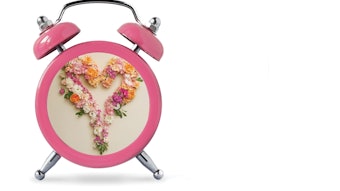
Mindbody unveiled the 2023 Mindbody Wellness Index, which serves as the official trend forecast for the upcoming year. As one of the industry's largest research studies, Mindbody surveyed more than 17,000 Americans to discover what trends are here to stay, on their way out and making a reappearance.
1. Going Back to Our Roots
Today’s wellness seekers are looking to reconnect with nature, with nearly 40% saying they’re embracing a more natural lifestyle. When it comes to clean beauty, women are more conscious, with women reporting they’re more likely to visit a salon or spa that uses natural products, and try natural anti-aging techniques like facial massage and sculpting tools. Wellness enthusiasts are turning to rest and the great outdoors to boost their mental health, with nearly 40% saying they spend time outside to support their mental well-being, and 24% go for nature walks or forest baths.
People are also looking to plants and herbs to reduce stress and improve cognitive function, with more than four in 10 Americans having either tried or are interested in trying adaptogens; mushrooms that can reduce negative effects of stress on the body, or nootropics, which are medical-grade supplements that can support brain performance. Millennials, and especially millennial men, are most likely to try these options for optimal health.
Related: 6 Sustainability Trends Shaking Up Natural Cosmetics in 2023
2. The Wellness Generation
For Gen Z and millennials, wellness isn't hours spent on cardio machines and crash diets, but rather feeling connected, emotional, and inclusive—the foundation of a well-lived life. In almost every way, Gen Z and millennials engage with wellness more than their mature counterparts. For example, they spend the most on fitness, salon, spa and wellness services, and they're most likely to work out at least once a week and eat the daily recommended servings of fruits and vegetables.
Younger generations prioritize their mental well-being more than other generations, too. Gen Z and millennials are also most interested in the community aspect of wellness, with more than a quarter who say they’re focused on wellness to feel connected to other people, and expect wellness to be a part of the workplace. It was found that these generations are more likely to say wellness benefits or perks are important when choosing an employer than other age groups.
3. The Year of The Woman
Whether it's going to a #WomensOnlyGym or taking advantage of the body’s hormonal shifts, the data is clear: American women are tapping into their feminine power like never before. 39% percent of women say they prefer women-only gyms or fitness studios, which may be why the number of women who experience “gym-timidation” has decreased this year. For those who are too intimidated to work out in public, seeing more real and diverse bodies in fitness promotions will help.
While periods used to be a taboo topic, talking about cycle syncing, or aligning diet, exercise and other lifestyle habits—even skin care products—with the stages of the menstrual cycle is now becoming an increasingly mainstream topic. 35% of women between the ages of 18-50 structure their workouts based on their menstrual cycle, with Gen Z and millennials most likely to do so. The number of American women who say they’re sexually fulfilled is also on the rise. This could be due to the growing number of women who actively seek to improve their sexual wellness with enhancement therapies, coaching or workshops.
4. Functional Fitness for a Longer, More Fulfilled Life
All signs point to longevity becoming the new weight loss. Americans report being less concerned with using exercise to control their weight and more concerned with living longer. In fact, almost a third of wellness seekers (29%) say they exercise because they want to live a long and healthy life—a significant increase from last year. One specific way men and women are optimizing their health is functional fitness—a type of strength training that prepares the body for day-to-day activities like squatting, bending, pushing and lunging.
More than half (51%) of Americans engage in movement that prepares the body for daily living, with millennial men the most likely to do so. Workout recovery is also a top priority, with nearly half (47%) of Americans saying practices like stretching and restorative yoga are very important to them. More than one third of people have tried or are interested in trying ice baths, while over a quarter (26%) of Americans practice biohacking for peak physical and mental performance.
Related: Top 10 Wellness Trends of 2023
5. The Rise of the Wellness Collective
The past few years have underscored the importance of connection in our day-to-day lives, and we’re not talking about internet connection. Men and women will continue to look to fitness, beauty and wellness businesses as a source of community, with nearly half (43%) saying that community is a very important part of wellness experiences. More than a third of Americans are likely to choose wellness businesses that are well known for their community-building activities, and nearly a quarter say they’re more focused on their health and wellness to feel connected to other people.
Showing the correlation between connectedness and wellness, men and women who use beauty and integrative health services report feeling more connected to their communities than those who don't. Similarly, the more active Americans are, the more socially connected they feel, too.










